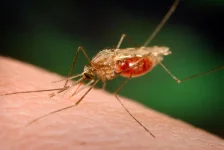Namibia's health minister, Esperance Luvindao, revealed a serious malaria outbreak affecting the country. Over the past year, 69 people have died from the disease, with 35,412 total cases reported nationwide. The situation became even more critical when 5,256 new cases emerged within just one week, resulting in three additional deaths.
The most affected regions include Katima Mulilo, Andara, Nkurenkuru, Nyangana, Rundu, Ncamagoro, and Outapi. Luvindao emphasized that malaria remains a preventable and treatable disease. She stressed the government's commitment to providing prevention and treatment services across the country.
Health officials are urging communities to take immediate action. People should seek medical help when experiencing symptoms like fever, chills, headaches, and muscle pain. Preventive measures include sleeping under treated mosquito nets, allowing indoor spraying teams to treat homes, removing stagnant water, and keeping grass around homes clear.
The minister explained that climatic conditions and low intervention coverage have contributed to the outbreak. Indoor residual spraying has fallen below the recommended 85% coverage for several years. Late medical attention further complicates the situation, potentially leading to severe cases and increased fatalities.
Luvindao launched a National Risk Communication and Community Engagement Strategy to address the crisis. The new approach aims to help healthcare professionals communicate effectively about health risks and develop strategic interventions to stop disease outbreaks. The strategy will standardize communication channels and maximize media engagement to support the national response.
The most affected regions include Katima Mulilo, Andara, Nkurenkuru, Nyangana, Rundu, Ncamagoro, and Outapi. Luvindao emphasized that malaria remains a preventable and treatable disease. She stressed the government's commitment to providing prevention and treatment services across the country.
Health officials are urging communities to take immediate action. People should seek medical help when experiencing symptoms like fever, chills, headaches, and muscle pain. Preventive measures include sleeping under treated mosquito nets, allowing indoor spraying teams to treat homes, removing stagnant water, and keeping grass around homes clear.
The minister explained that climatic conditions and low intervention coverage have contributed to the outbreak. Indoor residual spraying has fallen below the recommended 85% coverage for several years. Late medical attention further complicates the situation, potentially leading to severe cases and increased fatalities.
Luvindao launched a National Risk Communication and Community Engagement Strategy to address the crisis. The new approach aims to help healthcare professionals communicate effectively about health risks and develop strategic interventions to stop disease outbreaks. The strategy will standardize communication channels and maximize media engagement to support the national response.












